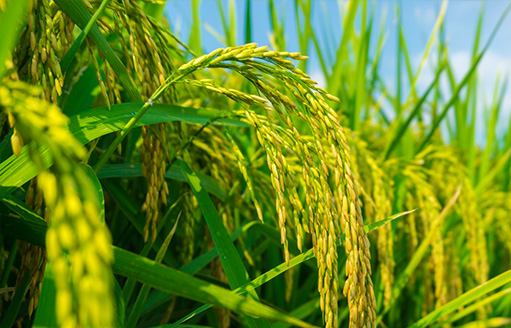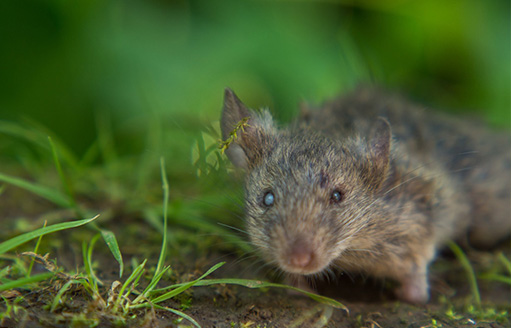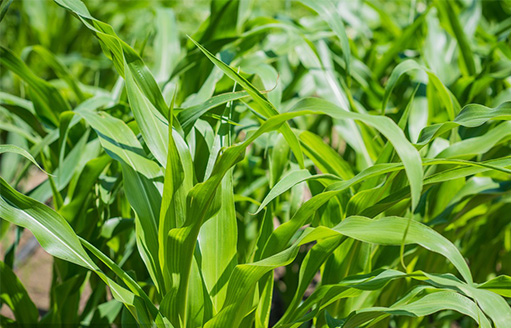Water and fertilizer integration technology, through the timely and appropriate amount of water and nutrients to the root zone of crops, can meet the needs of crop water and fertilizer in a timely and effective manner, is a key measure to achieve corn dense planting and precise control of water and fertilizer, and support the improvement of corn yield per unit area. In order to promote the increase of large area yield of corn and serve a new round of 100 billion catty grain production capacity improvement project, this plan is formulated.
1. Suitable area and technical effect
The corn producing areas suitable for water supply include spring corn in the northeast and along the Great Wall, spring corn in the Northwest inland irrigation areas and along the Yellow irrigation areas, summer corn in the Huang-Huai and Fen-Wei plain in North China, and some supplementary irrigation corn growing areas in the southwest. Precision irrigation and fertilization are mainly adopted by ground drip irrigation, shallow buried drip irrigation or deep buried infiltration irrigation, etc., timely dripping out after sowing to ensure full seedling, balanced irrigation and fertilization according to needs in the whole process, accurate supply of nitrogen and potassium backward, phosphate fertilizer base matching, medium and trace elements due to need to supplement, to ensure that no fertilizer is removed in the later stage, and to support high-density groups. At the same time, it is supported by scientific seed selection, chemical control and prevention and control of diseases, pests and grasses. To achieve the double improvement of water and fertilizer efficiency and corn production capacity, support density increased by 10%-30%, yield per unit and water productivity increased by more than 10% compared with the local conventional model.
2. technical points in different regions
(1) Spring corn in the northeast and along the Great Wall.It mainly includes spring corn in northeast and central China, eastern and central Inner Mongolia, northern North China, Loess Plateau and other regions. The semi-arid and semi-humid regions with sprinkler drip irrigation facilities are suitable for shallow buried drip irrigation, drip irrigation under film and deep buried infiltration irrigation.
1. Land preparation and sowing.First, fine-grained land preparation. The land preparation should grasp the key points of "flat, broken and even", and rake the soil after tilling or rotating tilling, so that the tilling layer is virtual and solid, the ground is flat and there is no obvious dirt. Second, timely sowing. When the ground temperature at 5 cm of the topsoil is stable more than 10-12℃, it is suitable for sowing soil moisture, and the mulched plots can be appropriately advanced. Third, scientific sowing. Before sowing, the seeds can be coated or mixed twice, and the seeds can be soaked with liquid fertilizer containing phosphorus and zinc to increase seed nutrition and promote rooting. Selection of machinery with navigation function and precision seeder sowing, the speed is uniform and slow, single grain precision sowing, sowing depth 3-6 cm. When planting large and small rows, the large row spacing is generally 70-80 cm, and the small row spacing is generally 30-40 cm. Fourth, reasonable densification. Select varieties that have been approved by the state or the provincial level and have been planted locally and performed well in drought, density, disease resistance, high yield and suitable for harvesting. Moderate increase in seeding density, compared with the traditional planting mode, according to local conditions increased by 15%-30%.
2. Integrated water and fertilizer system.It is mainly composed of water source, head hub, water distribution network and drip irrigation belt (pipe). The specifications and models of drip irrigation equipment are selected according to the actual production, and the water output of drip irrigation irrigators is generally between 1.0 L/h and 2.5 L/h. The first hub includes facilities such as pressurization, filtration and intelligent decision-making for irrigation and fertilization. In areas with insufficient accumulated temperature and large evaporation, drip irrigation under film should be used. Shallow buried drip irrigation should be used in the western part of Northeast China and the eastern part of Inner Mongolia.
3. Irrigation and fertilization strategies.It is recommended to apply corn formula fertilizer 20-25 kg/mu. When fertilizing, the fertilizer is 5 cm away from the seed side and 7-10 cm deep. It is recommended to choose a new fertilizer with water retention, rooting and other effects. Under film drip irrigation, corn was irrigated 5-8 times during the whole growth period, with each irrigation amount of 10-25m³/ mu, and the irrigation quota was about 100-150m³ per mu. The single irrigation amount of shallow buried drip irrigation was about 3-5m3/ mu higher than that under film drip irrigation. After seeding, the seedlings were irrigated by drip irrigation. At the same time, a large amount of elemental water-soluble fertilizer (high phosphorus, middle nitrogen and low potassium type) or mono-ammonium phosphate was applied along with the water droplets, which was conducive to rapid and uniform seedling emergence. Apply a large amount of water soluble fertilizer with high nitrogen and a large amount of elements in 2 times before jointing to pulling male 5-8 kg/mu. Drip application of balanced large amount of elemental fertilizer 5-8 kg/mu during the male-pulling period. From filling stage to milk ripening stage, apply water soluble fertilizer with high nitrogen and large amount of elements 5-7 kg/mu. Nitrogen (N) 13-20 kg/mu, phosphorus (P2O5) 6-10 kg/mu, potassium (K2O) 4-10 kg/mu were applied during the whole growth period.
4. Control and prevent disease.Under high density planting conditions, corn population was large and lodging risk was high. During 6-8 leaf opening period, corn growth control agent was applied to control ear height and thicken base stem nodes to improve lodging resistance of corn. Before and after seeding, herbicides were sprayed to control weeds, and maize borer, stem rot and leaf spot diseases were monitored at booting stage.
(2) Spring corn in Northwest inland irrigation area and along the yellow irrigation area.It mainly includes inland irrigation areas such as Xinjiang and Hexi Corridor, as well as irrigation areas along the Yellow River in Gansu, Ningxia and Inner Mongolia, which are arid and semi-arid areas with low precipitation and large evaporation, so it is suitable to popularize the integrated technology of water and fertilizer under corn film drip irrigation. Along the Yellow River irrigation area, it is advisable to spread the Yellow River water direct filter drip irrigation technology on this basis to solve the problem of the Yellow River water and sediment filtration.
1. Selection of varieties and scientific sowing.According to the climatic characteristics and cultivation management level of irrigation area, the high yield and high quality multi-resistance varieties with good density tolerance, low ear position and strong lodging resistance were selected. Before sowing, the seeds are coated with insecticides, fungicides, compound fertilizers, trace elements, plant growth regulators and other preparations containing binder to improve the stress resistance of maize. The sowing depth is generally 4-6 cm, if the soil moisture is insufficient, it can be properly deep sowing, cover the soil after sowing, and reduce the evaporation of soil water. When planting large and small rows, the large row spacing is generally 70-80 cm, and the small row spacing is generally 30-40 cm. Reasonable increase in seeding density, Hexi irrigation area, Hetao irrigation area and other high-yield plots can generally be increased to 6500-7000 plants/mu or so, the specific mu number varies according to the variety.
2. Mechanical film coating and pipe laying.It is recommended to use a seeding machine with Beidou navigation function to complete fertilization, seeding, pipe laying, film laying, film pressing, soil covering and other operations at one time. The spacing of drip irrigation belts is 90-120 cm. One drip irrigation belt controls the irrigation of two rows of corn. After seeding and before closing weeding, reduce the occurrence of weeds. Under film drip irrigation, it is recommended to cover the ground with a biodegradable film with a width of 70 cm and a thickness of 0.01 mm (the specific model varies according to the planting mode). The film is tightly compressed and covered with soil every 2 meters to prevent the soil from running and strong winds from breaking the film.
3. Irrigation and fertilization strategies.The whole growth period of corn is generally irrigated 8-12 times, and the irrigation quota is about 145-320m³ per mu. After seeding, the irrigation water is used once to produce seedlings, and the irrigation water is 15-30m³/ mu. In the area where conditions are available, 2-3 tons of decomposed organic fertilizer should be applied during autumn tilting, and 20-30 kg/mu of corn formula fertilizer should be applied as the base fertilizer. It is recommended to choose new fertilizers with water retention and rooting effects. The water and fertilizer supply in the middle and late stages of maize was strengthened, and the fertilizer was applied once in jointing stage, once in joint-trumpet stage, 2-3 times in trumpet - spinning stage, 2-3 times in spinning-grouting stage, 6-8 times in the whole growth stage. A total of nitrogen (N) 13-20 kg/mu, phosphorus (P2O5) 6-10 kg/mu, potassium (K2O) 4-10 kg/mu, water soluble fertilizer is used for topdressing, and the fertilizer amount can also be adjusted according to the soil fertility, target yield and other conditions. In Hetao irrigation area of the Yellow River Basin, the low cost and high efficiency of sediment filtration is the key to popularize the integration technology of water and fertilizer. It is suggested to adopt the Yellow River water direct filtration technology to achieve fast, efficient and low cost filtration and meet the requirements of drip irrigation.
4. Control and prevent disease.The microclimate of corn under drip irrigation under film is dry, so it is necessary to strengthen the comprehensive control of leaf mites, and pay attention to the control of corn borer, slime and grassland borer. In the early stage of maize jointing, the growth control agent was applied to control ear height and thicken base stem nodes to improve the lodging resistance of maize.
(3) North China Huanghuai and Fenwei plain summer corn.It mainly includes Hebei, Henan, Shandong, Jiangsu and the areas north of Huaihe River in Anhui, Guanzhong in Shaanxi and Fenhe Valley in Shanxi. Wheat-corn rotation is the main cropping method, which is suitable for the integration of water and fertilizer by surface drip irrigation, shallow buried drip irrigation, deep buried seepage irrigation, buried scalable sprinkler irrigation and walking sprinkler.
1. Variety selection and treatment.The medium and late summer maize varieties which are compact, resistant to disease and falling, easy to be collected and coated were selected. If there is no coating treatment, seed dressing or seed coating agent coating can be carried out according to the common diseases and pests in the planting area. For example, 5.4% imidacloprid, pentazolol and other high-efficiency and low-toxicity seed coating agents were selected to control gray planthopper, aphid and silk smut at seedling stage. The seeds were mixed with ptyphos and other agents to prevent and control ground pests such as tiger, golden needle and grub.
2. Single seed fine sowing reasonable dense planting.It is advisable to use mechanical seeding with equal row spacing, and the row spacing is generally 60-65 cm. For stubble elimination and direct seeding, mechanical seeding with equal row spacing or row size can be used. When planting large and small rows, the large row spacing is generally 70-80 cm, and the small row spacing is generally 30-40 cm. Sow to a depth of 3-5 cm. According to the density of the variety, the density of the compact varieties is 5500-6000, and the semi-compact varieties have a density of 5000-5500.
3. Water and fertilizer integrated pipeline laying.In the shallow buried drip irrigation field with two crops of winter wheat and summer corn a year, the seeder with the function of shallow buried drip irrigation belt (tube) is used when the wheat is sown, and the depth of clay or loam is about 2-3 cm, and the depth of sandy loam is 4-5 cm. The laying length of drip irrigation belt (pipe) is set according to the specifications of drip irrigation belt (pipe) and the actual production. Corn is sown in rows reserved in the middle of the drip irrigation belt (tube). In the summer corn field without drip irrigation belt (pipe) in the previous crop, if there is straw in the previous crop, the straw should be crushed or cleaned first, and then the summer corn planting and pipe laying operation. The integrated water and fertilizer pipeline for subsurface infiltration irrigation should be constructed and laid before wheat sowing.
4. Irrigation and fertilization strategies.The growth of maize in this area is in the same period of rain and heat, so it can be combined with precipitation to measure the soil moisture. When the relative water content of 0-20cm soil is less than 65% after seeding, the seedling water produced by drip irrigation is about 15m3/ mu. When the relative water content of 0-40cm soil is less than 70% at jointing stage, irrigation is 15-20m3/ mu. When the relative water content of 0-40cm soil is less than 75%, the irrigation water is 20-25m3/ mu. The recommended total nutrient application rate is nitrogen (N) 15-18 kg/mu, phosphorus (P2O5) 6-8 kg/mu, potassium (K2O) 8-10 kg/mu, of which 70%-80% nitrogen fertilizer and 40% potassium fertilizer are applied with water in 3-4 times from jointing to grouting stage. Applying zinc sulfate monohydrate at 2 kg/mu in calcareous soil or zinc-deficient plots.
5. Other supporting measures.The first is the "sealing combination" of weed control, using the combination of pre-bud closure after sowing and directional spraying of stems and leaves after seedling to control weeds. After seeding and before bud closure are preferred to reduce the pressure of weeding after seedling. The second is to control prosperity and prevent lodging. In the early stage of maize, the amount of nitrogen fertilizer was controlled to avoid the growth of the plant. In 6-8 leaf spreading period, scientific spraying of growth control agent can shorten internode and enhance lodging resistance. The third is timely late harvest, mechanical harvest after the kernel milk line basically disappears and the base black layer appears.
3. Key tasks
(1) Strengthening technology integration.According to the key points of maize water and fertilizer integration technology model in different regions, technical application research and model integration innovation were carried out. Based on the comparison of different irrigation methods, irrigation amount, fertilizer application amount, etc., the technical parameters, supporting varieties, cultivation and other measures are optimized, and the localization of the corn water and fertilizer integration technology model is integrated, and the technical regulations are formed for ripening, so as to improve the pertinence and practicability, and achieve the goal of double improvement of water and fertilizer efficiency and corn yield per unit area.
(2) Carrying out demonstration projects.In areas with irrigation conditions, vigorously promote the application of corn water and fertilizer integration technology, and transform the advantages of high-efficiency water-saving irrigation equipment into grain productivity advantages. Combined with the green high-yield, high-efficiency and water-saving grain increase to promote county and corn yield improvement projects, concentrated on continuous corn water and fertilizer integrated yield and high-yield integrated demonstration.
(3) Do practical guidance training.The integration of water and fertilizer technology as the key technology of corn yield, mobilize agricultural technology extension personnel at all levels, experts from scientific research institutions, and social service organizations to go into the field, carry out technical guidance, and help farmers solve production problems. Technical training will be held online and offline to explain key points and improve farmers' efficient water-saving irrigation and scientific water and fertilizer management skills.







